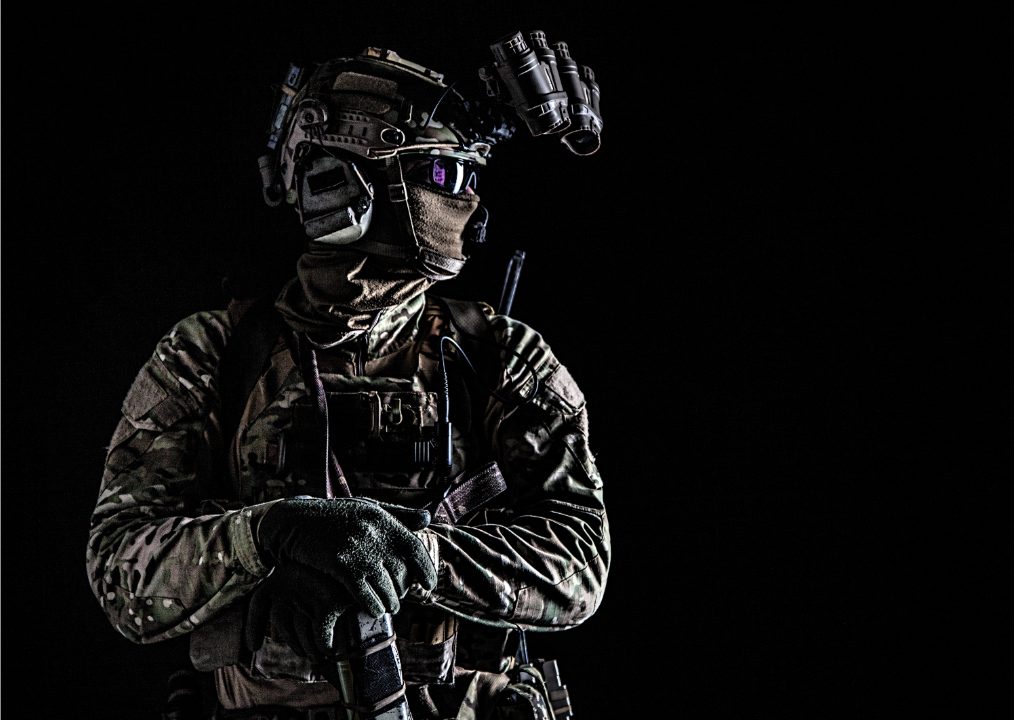If you’re interested in night vision devices and ready to purchase your own equipment, it’s important to conduct research and learn which NVD offers the best fit for you.
Whether you’re seeking night vision goggles, binoculars, scopes, or accessories, it’s important to know there are various options for each NVD setup. Each also comes with its own pros and cons.
Here’s some advice for choosing the right night vision device for your needs and situation.
Night Vision Binoculars vs. Night Vision Goggles
In the general category of night vision equipment, you will find monoculars, binoculars, goggles, helmets, night vision scopes, and day or night systems.
When sorting through your options, there is more to consider than just style. To choose the best night vision device for your needs, it is critical to think about such features as image brightness, construction material, whether or not it’s helmet-mounted, and the digital technology powering the unit.
An Overview of Night Vision Devices and Digital Magnification
When preparing to invest in any night vision setup, there are generally three things to consider:
- Image intensifier tubes
- Manufacturer
- Price
Modern devices rely on classification by generation, and the image intensifier tube generation, such as those manufactured by L3 Harris , impacts not only the image visually but also how accurate optical magnification will be.
The manufacturer’s reputation also plays into such attributes as the quality of your equipment, the number of key features included, and the product’s lifespan.
Price is also an important consideration. Purchasing third-generation equipment or units used by law enforcement agencies may often provide the best night vision functionality, but they also often come with higher price points.
Digital Night Vision With Complete Darkness and the IR Illuminator
Devices typically operated in the dark don’t have the capabilities necessary without adequate night vision technology. These devices are typically utilized in low-light conditions, and the tech within relies on ambient light and bright light sources to help illuminate images down range.
Analog night vision tubes amplify any surrounding light using technology similar to digital cameras. Thermal, however, doesn’t need light, mainly because such devices rely on infrared light and sensors that look for differences in temperature along the line of sight.
The infrared illuminator acts like a flashlight for NVDs. But in total darkness, a built-in IR Illuminator is critical to optimum function. Handheld night vision devices often come with a built-in infrared illuminator, and the size tends to provide extra battery life for long hours on duty. Still, the IR illumination keeps the user from blending into the surroundings.
Understanding Your Night Vision Capability and Image Quality
Modern night vision devices generally include either automatic gain control or manual gain control. The ‘gain’ determines how dark or bright the image will be when using your night goggles.
In an auto-setup, the device relies on a sensor to adjust the brightness level to address ambient lighting conditions. With the manual gain adjustment, the user determines which setting is best for intense or extreme low-light conditions.
The Options With Digital Night Vision Devices
Digital devices are used across a number of industries. In some form or fashion, the earliest forms of these binoculars were utilized during World War II.
However, time has led to many dramatic improvements in night vision technology, bringing with it such innovations as digital zoom, better battery life, the infrared laser, and more.
If you plan to use a night vision device for hunting, it’s best to use an independent scope and purchase an attachment for your daytime optical sights. These are just some of the night optic products to consider.
Best Night Vision Goggles
The basic design of this night vision option allows for viewing from both eyes. Night vision goggles work without any additional magnification. Goggles also tend to be easily accessible due to being head-mounted.
Many users find operating these devices comes naturally, despite the complex construction that makes night vision goggles so effective. Goggle enthusiasts can select from either a single-image tube or a dual-image tube. Dual image quality presents an image in stereo, which gives each eye a slightly more independent view of the same night vision image.
For night vision, this can be a benefit, as it increases depth perception and improves the ability to navigate well in darkness.
Night vision devices are typically worn for long periods, which can sometimes cause discomfort. These devices are typically heavier than other options and much larger in size. Goggles can sometimes cause the neck and shoulders to feel a light extra strain and pressure when mounted to a helmet. The motion can also cause the unit to drop down and slip past the eyes when walking and navigating. Depending on the user, this can sometimes become tiring, particularly as you continually adjust the device.
Night Vision Binoculars
Night vision binoculars work a little differently than goggles, though performance with either device depends on the night vision generations you choose from.
A binocular night vision device provides two eyepieces and uses magnification to enhance the image. Due to the magnification, these devices are often too heavy to mount.
Binoculars are most beneficial when standing still, since the magnification could cause you to lose some clarity when the light is lost. A Gen 3 device tends to remain consistent concerning the light impact on image clarity, making them one of the best night vision binoculars on the market.
Shopping for Night Vision Products
Whether you’re seeking high-quality night vision binoculars, high-performance night vision goggles, or the best night-vision monoculars, Steele Industries is here to help. Many of the products sold by Steele Industries are used by law enforcement, military, and security personnel. Visit Steele Industries and order yours today.


